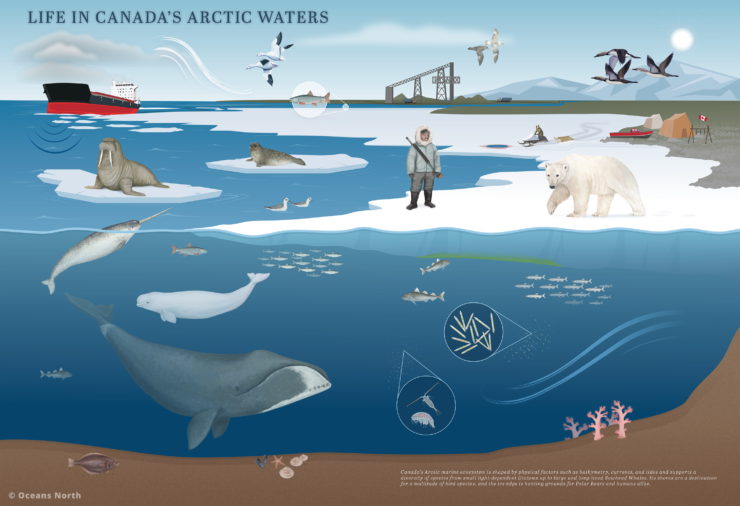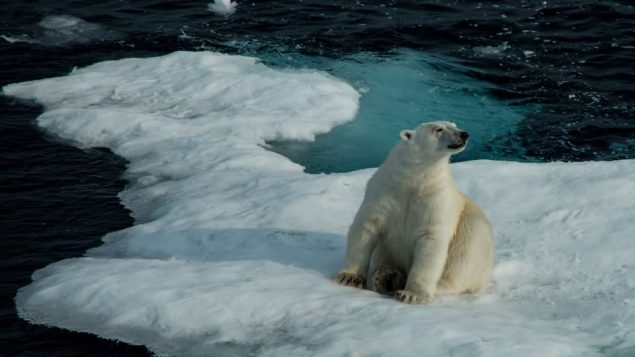Faced with dramatic shifts in the Arctic due to joint pressures of climate change and industrial development, a trio of Canadian NGOs released Monday an educational tool they hope will help shape the conversation about protecting the region’s fragile environment and its Indigenous peoples.
The 122-page trilingual – English, French and Inuktitut – Canada’s Arctic Marine Atlas released by Oceans North, Ducks Unlimited Canada and World Wildlife Fund- Canada provides a comprehensive overview of complex interactions between humans and various Arctic marine species.
“We’re pleased to offer this first-of-its-kind resource to help educate Canadians about the Arctic marine environment,” said in a statement Louie Porta, vice-president of operations for Oceans North. “Fact-based conservation measures are essential to ensuring a healthy Arctic Ocean for generations to come.”
The atlas begins its discussion of industrial development and conservation management in the Canadian Arctic with a focus on Inuit and their reliance on the ocean for hunting and travel.

This Arctic Fishes Food Web shows the movement of energy through key Arctic marine and anadromous fish species and how each species is interconnected. (Oceans North)
“While recognizing what is known, it is important to understand that Canada’s Arctic is experiencing unprecedented ecological change,” Mary Simon, the veteran Inuit and Canadian political leader, writes in the foreword to the atlas.
“At the same time, the region is facing a new generation of geopolitical and industrial interests that will have a direct impact on the future of Inuit Nunangat and its 53 communities.”
The atlas surveys species ranging from cold-water corals to bowhead whales and describes the region’s physical oceanography and biosphere, from the bottom of the food chain up through fish, birds and marine mammals.
The atlas includes seven chapters with a total of 67 images, 77 maps, 33 scientific illustrations and three food-web graphics.
“The Arctic is undergoing rapid change, attracting attention from nations and corporations eyeing its business potential,” said in a statement Paul Crowley, head of Arctic conservation for WWF-Canada. “We have an opportunity here to get it right, and that starts with understanding the marine environment through the eyes of the people who rely on it and the wildlife that make it home.”







For reasons beyond our control, and for an undetermined period of time, our comment section is now closed. However, our social networks remain open to your contributions.